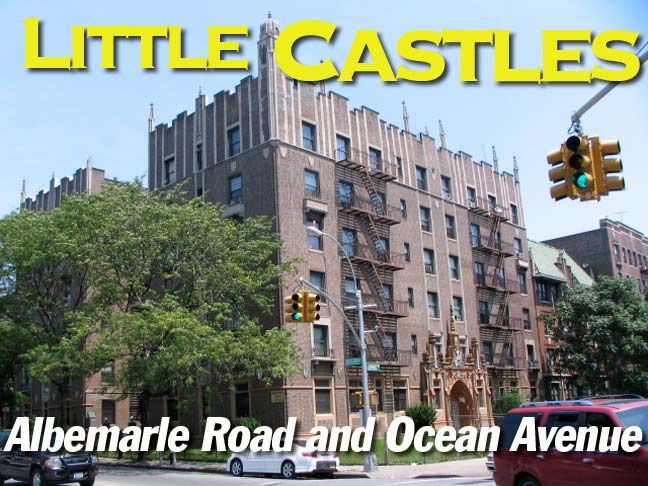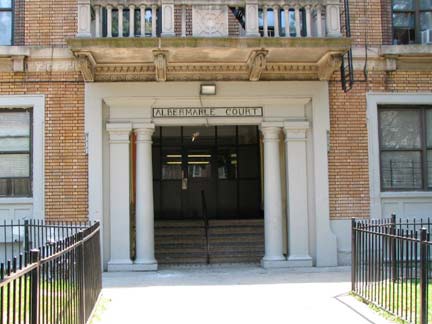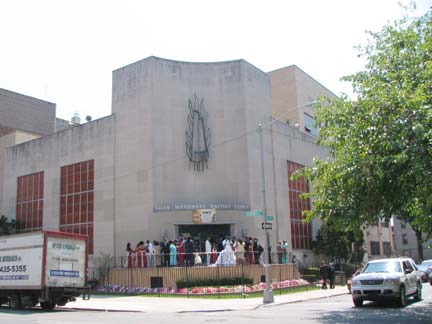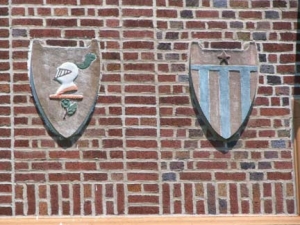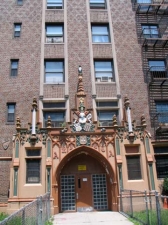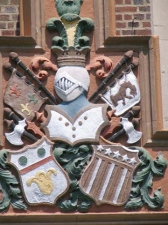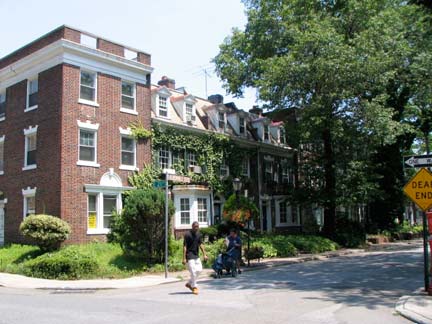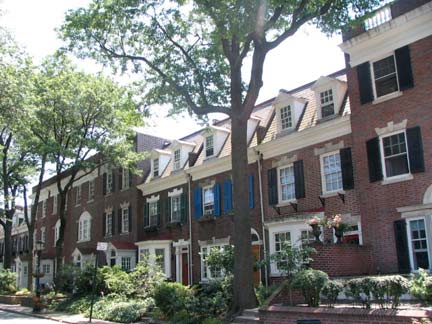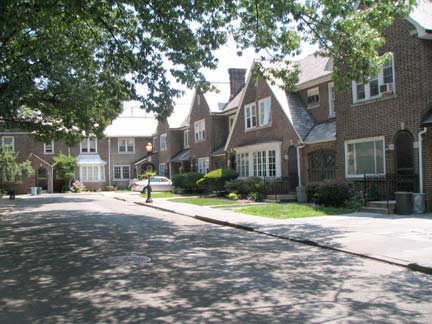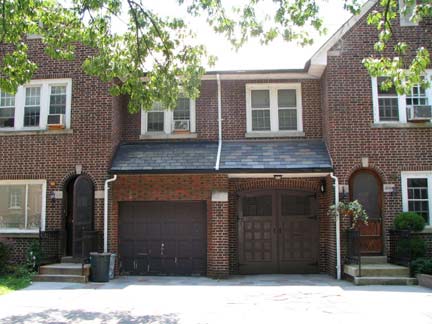I was slouching around Flatbush in July 2009, getting pictures of Brooklyn’s Tennis Court , the Reformed Protestant Dutch Church and its graveyard (which deserves its own page and will get one). Albemarle Rd. is one in a series of roads laid out by Dean Alvord in the late 1800s when he was developing Prospect Park South, one in a series of planned neighborhoods that even today maintain their aura of exclusivity. I shot extensively there in 2008 — as you might guess I have a big backlog.
What’s wrong with this picture? This building on Ocean Avenue has Albemarle spelled incorrectly, with an extra ‘r.’ But it seems to make sense phonetically — I always have to catch myself from saying “Alber-marle.” Neither the city nor the MTA have ever decided exactly how to spell the next name in the series — Beverly or Beverley — though they seem to have settled on the latter lately.
Between Ocean and Flatbush on Albemarle, you’ll see a myriad of architectural styles; this is the Salem Missionary Baptist Church on East 21st.
ForgottenFan Steve Jacobs: The Salem Baptist Church used to be the Shaare Torah Jewish Center prior to 1980, before they merged with the Flatbush Jewish Center (Church Ave & E. 5th)
The magnificent, at least on the exterior, Arista on Albemarle and Ocean. The terra cotta shields and ornamentation, it seems, get decent upkeep.
Albemarle is also the name of a quiet cul de sac on East 21st, Albemarle Terrace, which along with its partner to the north, Kenmore Terrace, make up their very own NYC landmarked district. Prior to 1916 this had been part of the Lott family holdings; the land was purchased by a Mabel Bull, who subequently hired the architectural firm of Slee and Bryson to construct two lanes lined with attached homes in the Georgian and Federal styles.
Though it is just to the north, Kenmore Terrace presents a different character. Its 6 houses were derived from the English garden City style and they were pioneers in their employment of attached garages, reflecting the increased importance of the automobile in 1918, the year of their construction.
The opposite side of Kenmore Terrace faces the Reformed Church yard, and the only building on that north side is the 19th-Century church parsonage.
Page completed August 19, 2009

